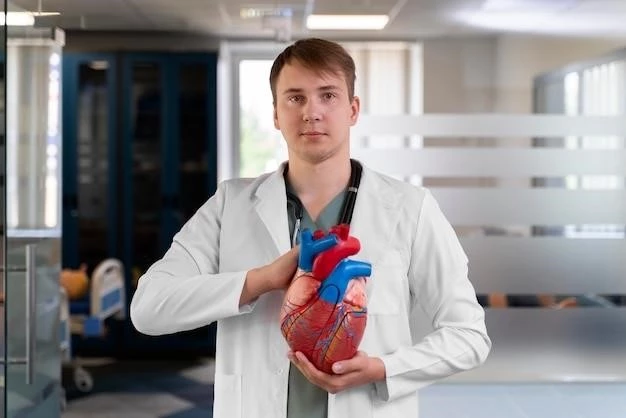Symptoms of Cardiac Tamponade
Recognizing symptoms like shortness of breath, chest pain, and dizziness is crucial for prompt treatment․
General Symptoms
General symptoms of cardiac tamponade may include anxiety, fatigue, weakness, and a sense of impending doom․ If you experience these symptoms along with any chest discomfort, seek immediate medical attention․ Early detection can lead to better outcomes․
Acute Symptoms
Acute symptoms of cardiac tamponade can include severe shortness of breath, rapid heartbeat, low blood pressure, and confusion․ If you or someone you know shows these signs, do not delay seeking emergency medical help․ Time is critical in managing cardiac tamponade to prevent serious complications․
Causes of Cardiac Tamponade
Understanding the causes, such as trauma or medical conditions, can help in prevention and management․
Trauma
Trauma, such as a car accident or a severe blow to the chest, can lead to cardiac tamponade․ Be cautious in high-risk situations and seek immediate medical evaluation after any significant chest injury to rule out potential complications like cardiac tamponade․
Medical Conditions
Medical conditions like cancer, kidney failure, and autoimmune diseases can contribute to cardiac tamponade․ It is essential to manage these underlying conditions effectively to reduce the risk of developing cardiac tamponade․ Regular medical follow-ups and treatment compliance are crucial in preventing complications․

Diagnosis of Cardiac Tamponade
Early diagnosis through physical exams and diagnostic tests is key to prompt treatment․
Physical Examination
During a physical exam for cardiac tamponade, healthcare providers will look for signs like low blood pressure, elevated heart rate, and muffled heart sounds․ Regular health check-ups can aid in early detection, leading to timely intervention and better outcomes․
Diagnostic Tests
Diagnostic tests for cardiac tamponade may include echocardiography, chest X-rays, and cardiac MRI․ These tests can provide detailed images of the heart and pericardium to confirm the diagnosis․ It is crucial to follow through with recommended tests to ensure accurate detection and appropriate treatment planning․
Treatment Options for Cardiac Tamponade
Seek urgent medical intervention such as pericardiocentesis or surgery to relieve pressure around the heart․
Pericardiocentesis
Pericardiocentesis is a procedure where a needle is used to remove excess fluid around the heart․ It is essential in relieving pressure on the heart and restoring normal function․ Timely pericardiocentesis can be life-saving in cases of cardiac tamponade․ Follow medical advice closely for optimal recovery․
Surgery
Surgery for cardiac tamponade involves creating a pericardial window or removing part of the pericardium․ This procedure helps prevent fluid accumulation around the heart and reduces the risk of recurrence․ Surgical intervention is crucial for severe cases and may be necessary to ensure long-term cardiac health․ Follow post-operative care instructions diligently for a successful recovery․
Difference Between Cardiac Tamponade and Pericardial Effusion
Understand the distinction⁚ cardiac tamponade involves dangerous fluid accumulation, while pericardial effusion is milder․
Cardiac Tamponade
Cardiac tamponade is a life-threatening condition where fluid accumulation around the heart hinders its function․ Recognize symptoms like shortness of breath and seek immediate medical help to prevent complications․ Prompt treatment is crucial for a positive outcome․
Pericardial Effusion
Pericardial effusion is the accumulation of fluid around the heart․ While less severe than cardiac tamponade, it can lead to complications if left untreated․ Monitor symptoms like chest discomfort and fatigue․ Early detection and management are crucial to prevent progression to cardiac tamponade․
Prevention of Cardiac Tamponade
Avoiding trauma and managing underlying conditions can help prevent the risk of cardiac tamponade․
Control Underlying Causes
Controlling underlying causes such as hypertension or autoimmune disorders is vital in preventing cardiac tamponade․ Regular check-ups, medication adherence, and lifestyle modifications can help manage these conditions effectively․ Stay proactive in addressing health issues to reduce the risk of complications․
Avoid Trauma
Preventing trauma to the chest area is crucial in reducing the risk of cardiac tamponade․ Stay cautious during physical activities and wear protective gear when necessary․ Taking preventive measures to avoid accidents or injuries can significantly lower the chances of developing this serious condition․
Complications of Cardiac Tamponade
Be aware of potential complications like cardiogenic shock and organ damage; seek immediate medical attention if symptoms arise․
Cardiogenic Shock
Cardiogenic shock, a serious complication of cardiac tamponade, can lead to life-threatening circulatory failure․ Recognize symptoms like rapid breathing and confusion․ Immediate medical intervention is essential․ Prompt treatment can help stabilize the condition and improve the chances of recovery․
Organ Damage
Organ damage can result from reduced blood flow due to cardiac tamponade․ Symptoms may include confusion and cool, clammy skin․ Timely medical care is crucial to prevent irreversible harm․ Prompt intervention can help minimize organ damage and improve the overall prognosis following cardiac tamponade․
Recovery and Prognosis After Cardiac Tamponade
Follow medical advice diligently for a positive recovery outlook after cardiac tamponade․
Recovery Period
The recovery period after cardiac tamponade varies depending on the individual and the severity of the condition․ It is essential to attend follow-up appointments, follow prescribed medications, and gradually resume daily activities as advised by healthcare providers․ Patience and adherence to treatment plans are crucial for a successful recovery․
Prognosis
The prognosis after cardiac tamponade is generally favorable with prompt diagnosis and appropriate treatment․ However, the prognosis may vary based on factors such as the underlying cause, timeliness of intervention, and overall health status․ Following medical recommendations and attending regular check-ups can positively impact long-term prognosis․
